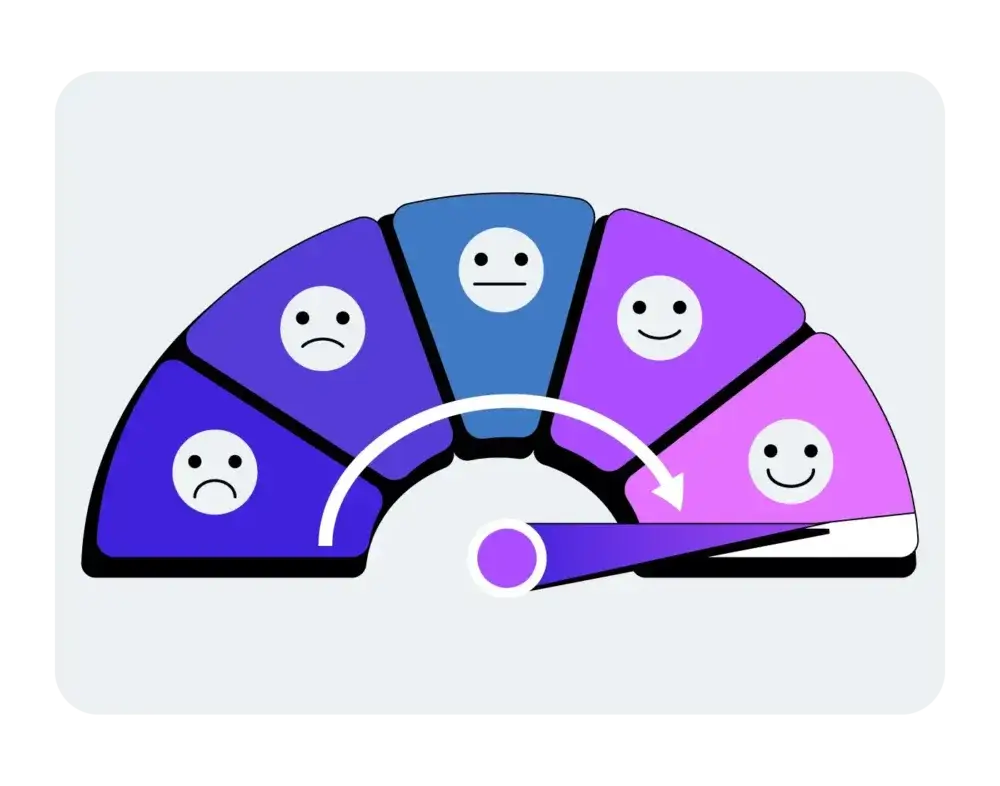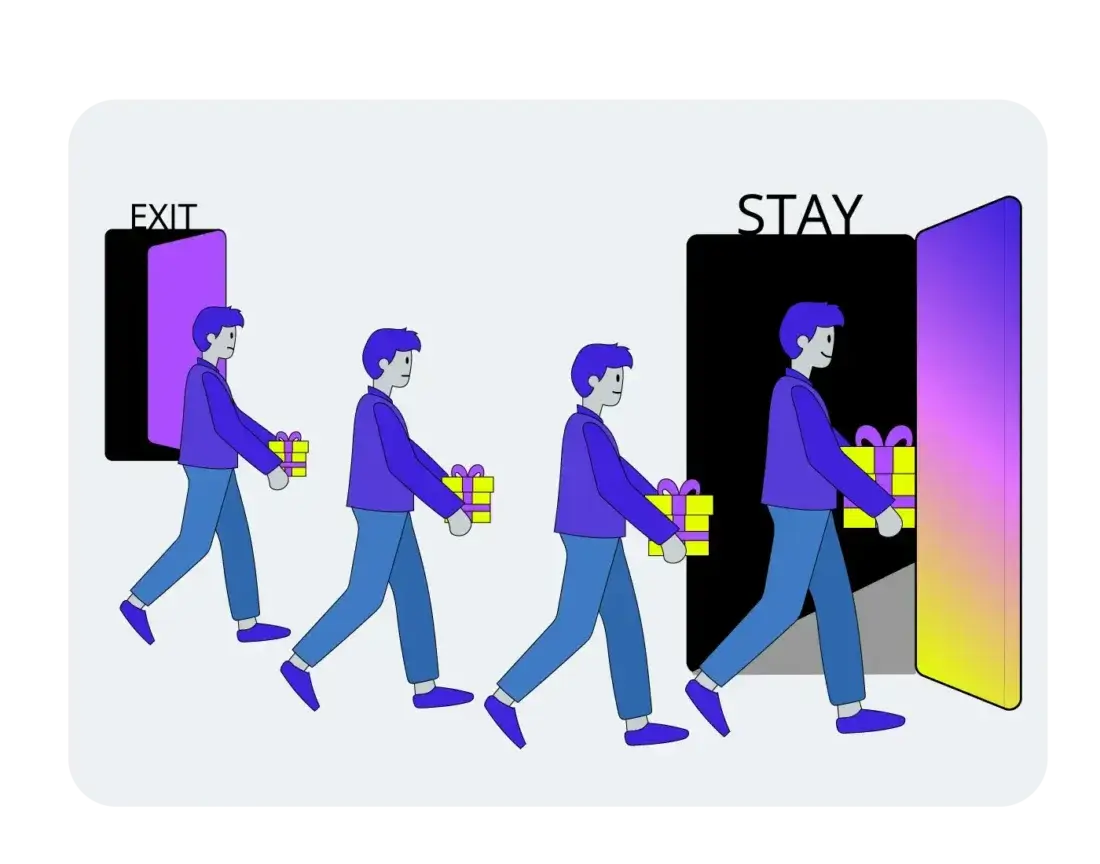NPS (Net Promoter Score) Software
Measure, analyse and improve NPS across your organisation
Net Promoter Score (NPS) is one of the most common customer experience metrics used by companies around the world. With NPS software you get a simple, flexible and powerful platform to engage your customers.

A view on the ground
67% of consumers cite a negative experience as one of the primary reasons for switching brands.
95% of dissatisfied
customers tell others
about their experience.
Companies with long-term profitable growth have average NPS scores twice as high as typical companies.
With Net Promoter Score you can:
- Identify unsatisfied and at-risk customers
- Segment customers by loyalty
- Optimise around a single customer metric
- Benchmark against industry and competitor scores
- Uncover customer loyalty drivers
- Monitor improvements in products, services and across the entire customer journey
See how much bad customer experiences
are costing your business
Use NPS data to predict and prevent customers from leaving
Use your NPS data to make powerful projections about customer behaviour, like whether they’re at risk of churn.
With AI and predictive analytics, you can combine NPS with your operational data – such as spend or repeat visits – to predict customer behaviour and potential impacts on your core operational metrics.


Powerful role-based dashboards and reporting
Get the right information to the right people in your organisation with role-specific, flexible dashboards and pre-configured reports.
With relevant, real-time insights, your organisations can be quicker to act and realize improvements to your customer experience.
One NPS survey, all channels
Improve your response rates by engaging customers on the devices and platforms they want to use. With NPS on Qualtrics XM for Customer Experience you can collect customer feedback through:
- Chatbots and messaging apps
- Text or SMS
- Mobile
- Native apps
- Offline surveys
- And more

You’re in good company
Qualtrics gives us the full context of the digital experience and helps us adapt in the moment
The link between our testing, design and development teams allows us to build breakthrough products
Ready to improve your NPS score?
Net Promoter Score FAQs
Net Promoter Score, commonly referred to as NPS is a well-known metric used to evaluate customer loyalty. NPS was developed by Fred Reichheld, a Bain Fellow and founder of Bain & Company’s Loyalty Practice. NPS uses a simple question and rating scale:
Based on your most recent support call, on a scale from 0-10, how likely are you to recommend COMPANY to a friend or colleague?
Based on the rating, respondents are divided into three groups:
- Promoters are respondents who respond with a score of 9 or 10.
- Passives are respondents who respond with a score of 7 or 8.
- Detractors are respondents who respond with a score of 0 to 6.
To find your score, subtract the percentage of promoters from the percentage of detractors. For example, if 10% of our respondents are detractors, 20% are passives, and 70% are promoters, your NPS score would be 70-10 = 60.
From the absolute NPS position, any score over 0 would be considered ‘good’ as there are more promoters than detractors although, this would be seen as the minimum level of progress. To be above average, a score greater than 50 is needed, so you would need to work on turning detractors into passives.
Net Promoter Score (NPS) provides a simple, quantitative measure of customer loyalty and satisfaction. It identifies promoters and detractors, facilitating targeted customer experience improvements. By tracking NPS over time, companies can gauge the effectiveness of service initiatives, predict business growth, and benchmark performance against competitors. NPS also encourages customer-centric cultures by putting the focus on customer feedback.
While NPS offers simplicity and benchmarking capabilities, it can oversimplify customer sentiment, reducing it to a single score that may not capture specific feedback or nuances. NPS doesn’t explain why customers are detractors or promoters, so additional research is often needed. Over-reliance on NPS can also ignore other important metrics, potentially leading to an incomplete understanding of customer experience and business performance.
To improve your NPS, focus on delivering exceptional customer service and developing a deep, actionable understanding of customer needs and pain points through regular feedback. Address the root causes of dissatisfaction, and implement continuous improvements based on customer insights. Engage and close the loop with detractors to resolve their concerns. Empower and encourage your team to provide exceptional experiences. Also, nurture relationships with promoters to build brand advocates. Regularly re-evaluate and refine your approach to maintaining a customer-centric culture.
Alternatives to Net Promoter Score include Customer Satisfaction Score (CSAT), which measures short-term happiness; Customer Effort Score (CES), which gauges the ease of customer experience. Others include churn rate analysis, retention rates, and qualitative feedback through customer interviews, focus groups, and observational studies to understand customer sentiment and experience more deeply.